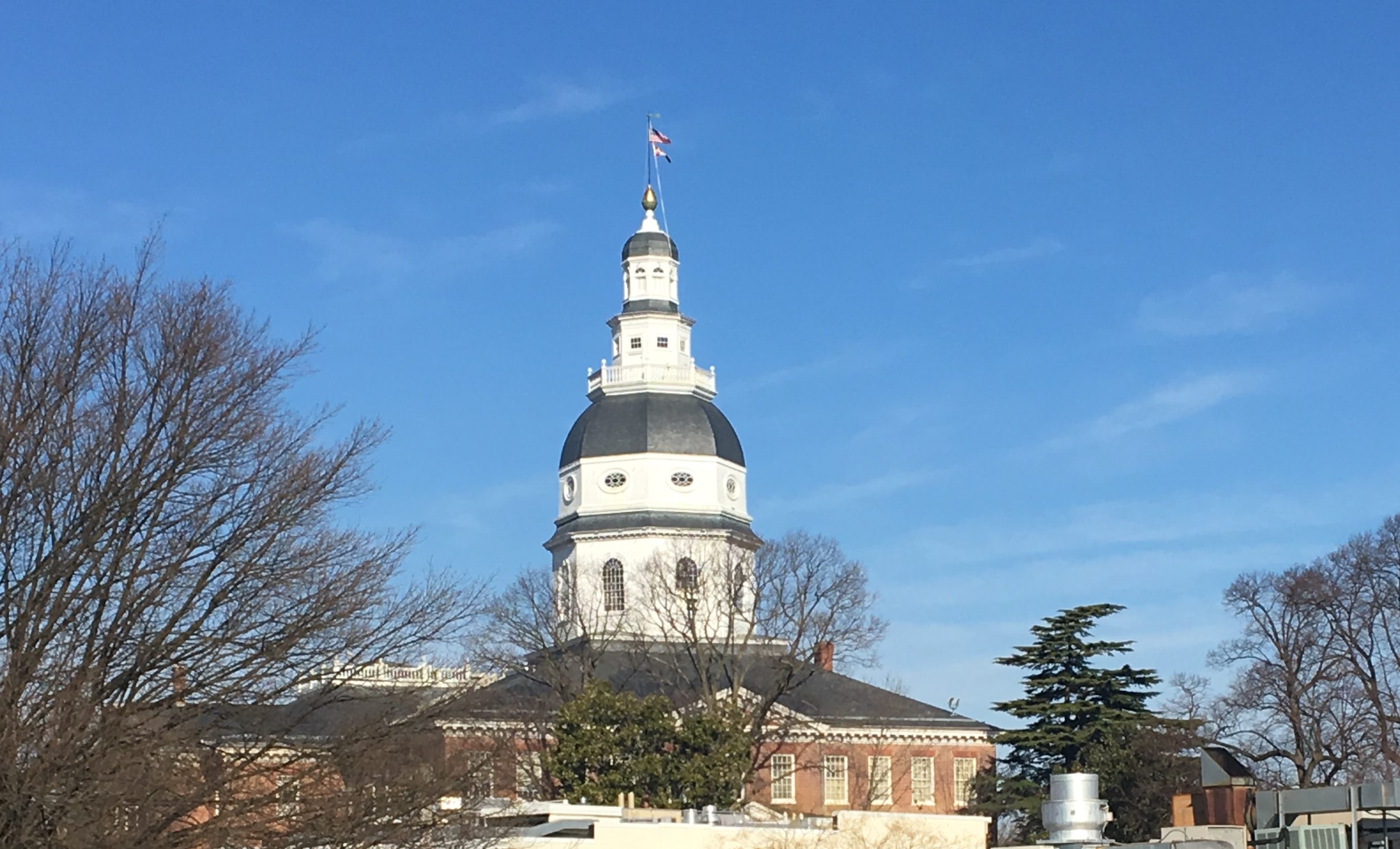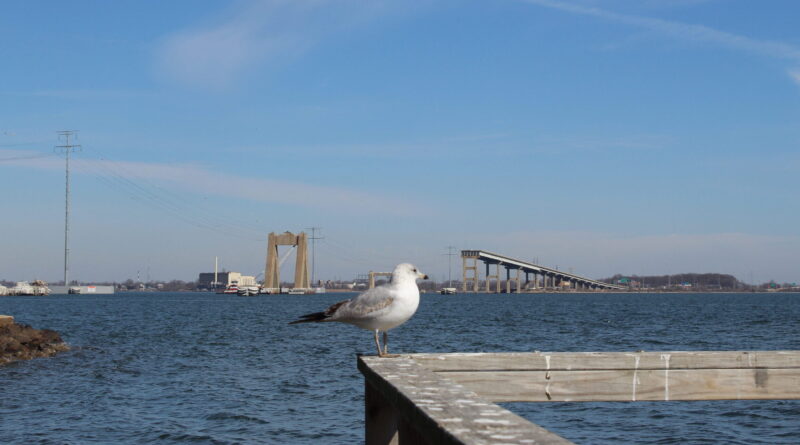Baltimore residents face daily disruptions after Key Bridge collapse
BALTIMORE – When the Francis Scott Key Bridge collapsed, it didn’t just disrupt traffic; it altered the daily routines of countless Maryland residents.
For Pam Moffett, 60, a Dundalk resident who has commuted to the University of Maryland for nearly 30 years, her once two-hour round trip has nearly doubled in time.
Since the bridge collapsed on March 26, 2024, the southeast corridor of I-695 closed indefinitely, forcing commuters to take alternative routes. As a result, I-95, I-895 and both harbor tunnel crossings have become more congested. This caused significant disruptions in the lives of people like Moffett who counted on the bridge to get to work, go to medical appointments or to see friends.
“This is a life changer,” said Moffett, director of administrative services for the Department of Cell Biology and Molecular Genetics at the University of Maryland. “I never would have bought my house here so far from work without that bridge.”
Moffett is now renting a room in a coworker’s home in Berwyn Heights, adjacent to the University of Maryland, to minimize driving time.
“She would have a six-hour commute,” said Scott Moffett, 59, Pam’s husband of 13 years. “When it first happened, she was coming home in tears.”

While the March 26 bridge collapse didn’t cause Baltimore’s economy to crater, it did create significant disruptions in the lives of some who relied on the bridge to get to jobs and medical appointments.
A study by the Baltimore Metropolitan Council said the Francis Scott Key Bridge averaged 39,000 crossings per weekday, traffic that now has to find another outlet. As a result, a 20-minute commute from Dundalk to Ferndale in northern Anne Arundel County has doubled to 41 minutes.
Amy Jubb, the department chair of school counseling at Sparrows Point High School, said the bridge collapse led to less sleep, increased time in the car, and a more hectic daily schedule.
A mother of a high-school student, Jubb said with new increased traffic, it’s a struggle to fit in doctors’ appointments, work meetings and her son’s sports events.
“I used to have a beautiful, relaxing commute into work,” Jubb, 50, said. “Now, it’s just like I’m a speed car racer trying to beat the clock.”
Louise Ruth, 85, of Dundalk, has lost her ability to get to her doctors’ appointments alone, restricting her independence.
With the bridge being gone, Ruth has to drive through the Baltimore Harbor Tunnel to get to the University of Maryland Baltimore Washington Medical Center in Glen Burnie for her appointments. She now relies on her children to take her since she’s worried about the increased number of crashes and traffic in the tunnels.
“I’m afraid to go by myself through the tunnel, God forbid, if something would happen,” Ruth said. “It makes it hard for me because I’m very independent.”
Moffett said she began renting a room in May from her co-worker, Tom McMullen, for $650 a month.
“I think it’s great Pam is able to stay here,” McMullen said. “For her to get an apartment would have been very, very, very expensive.”
Moffett is grateful for the room rental but finds living in two houses disorienting.
“It’s a little bit like living out of a suitcase, even though I have my stuff here, you’re always like where’s my clothes?” Moffett said.
Instead of being stuck in traffic for two hours, Moffett now can go to the gym after work and get to her rental by 6 p.m. to make dinner. On Fridays, she drives back to Dundalk for the weekend. Before the bridge collapse, Dundalk was a convenient commute to College Park due to its proximity to I-695, I-95 and I-895.
The Moffetts’ monthly mortgage payment averages around $1,400. Scott Moffett said he has to be more mindful of expenses. To keep up with their expenditures, Scott Moffett, chief engineer of Industrial Solutions LLC, said he takes up extra jobs within his company to pay for extra costs.
Pam and Scott both said they feel isolated with all the time they spend apart.
“I have to send her a picture of something versus showing it in person,” Scott Moffett said. “So, it’s just a little lonely.”
The bridge collapse also hurt their social lives. They used to have dinner with their friends who live in Pasadena about once a week, when the drive only took 15-20 minutes, Scott Moffett said. Now, with the trip nearly stretching an hour, they see those friends about once a month.
“You miss those people,” Pam Moffett said.
Many Dundalk residents interviewed for this article say the bridge collapse has brought in heavy truck traffic into the community, making local routes more dangerous.
“Because that bridge is gone, these trucks, some are going through neighborhoods and people are complaining,” said Suzie Coronel, president of the Norwood Holabird Community Association and real estate agent in Dundalk. “Your house is shaking.”
The heavy pounding of commercial truck traffic on neighborhood roads causes significant problems, said Ryan Esposito, managing partner of Holabird Tire and Auto.
“We had two water main breaks right up the street here within the past month, most likely due to the added traffic flow on the road,” Esposito said. “We were out of water for days.”
The bridge collapse has also affected some Dundalk-area businesses.
Andrew Brown, owner of Modern Discount Liquors, saw a significant decline in sales immediately after the collapse. Brown said sales initially dropped but have since returned, remaining 25% to 30% lower than before the bridge collapse.
At Pep Boys in Dundalk, assistant manager Geoffrey Miller also saw the negative effects firsthand. Miller worked at Pep Boys in Catonsville when the bridge collapsed, recalling decreased foot traffic and increased truck traffic. “It’s like people just weren’t spending money,” Miller said.
Robert Bunce, the maintenance manager of Curtis Bay Energy, a medical waste incinerator facility in Hawkins Point, Baltimore, lives in Sparrows Point, an eight-minute commute across the Key Bridge.
“Now to go to work, it’s at least an hour to get there and usually an hour and a half to an hour and 45 minutes to get home,” Bunce, 55, said. “It’s a huge difference.”
Bunce took the Curtis Bay job in part because the commute was short.
“I used to spend $100 a week on fuel,” he said. “Now I spend over $200.”

Capital News Service is a student-powered news organization run by the University of Maryland Philip Merrill College of Journalism. With bureaus in Annapolis and Washington run by professional journalists with decades of experience, they deliver news in multiple formats via partner news organizations and a destination Website.

